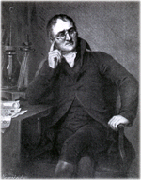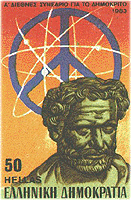|
CHF Chemistry WebQuest #2 Evidence for Atoms |  |
|
|

| |
Your Task
- All matter is made of tiny particles, called atoms.
- Atoms are neither created nor destroyed in chemical reactions.
- Atoms of different elements combine in whole number ratios, with more than one ratio being
possible for a given combination of elements.
- Each element is made of a different kind of atom, and the atoms of different elements have different masses.
![]() Research to answer all of the questions on the sheet, type your answers
into the template and then print it out to bring to class. The point
values assigned to each question are given on the sheet.
Research to answer all of the questions on the sheet, type your answers
into the template and then print it out to bring to class. The point
values assigned to each question are given on the sheet.
